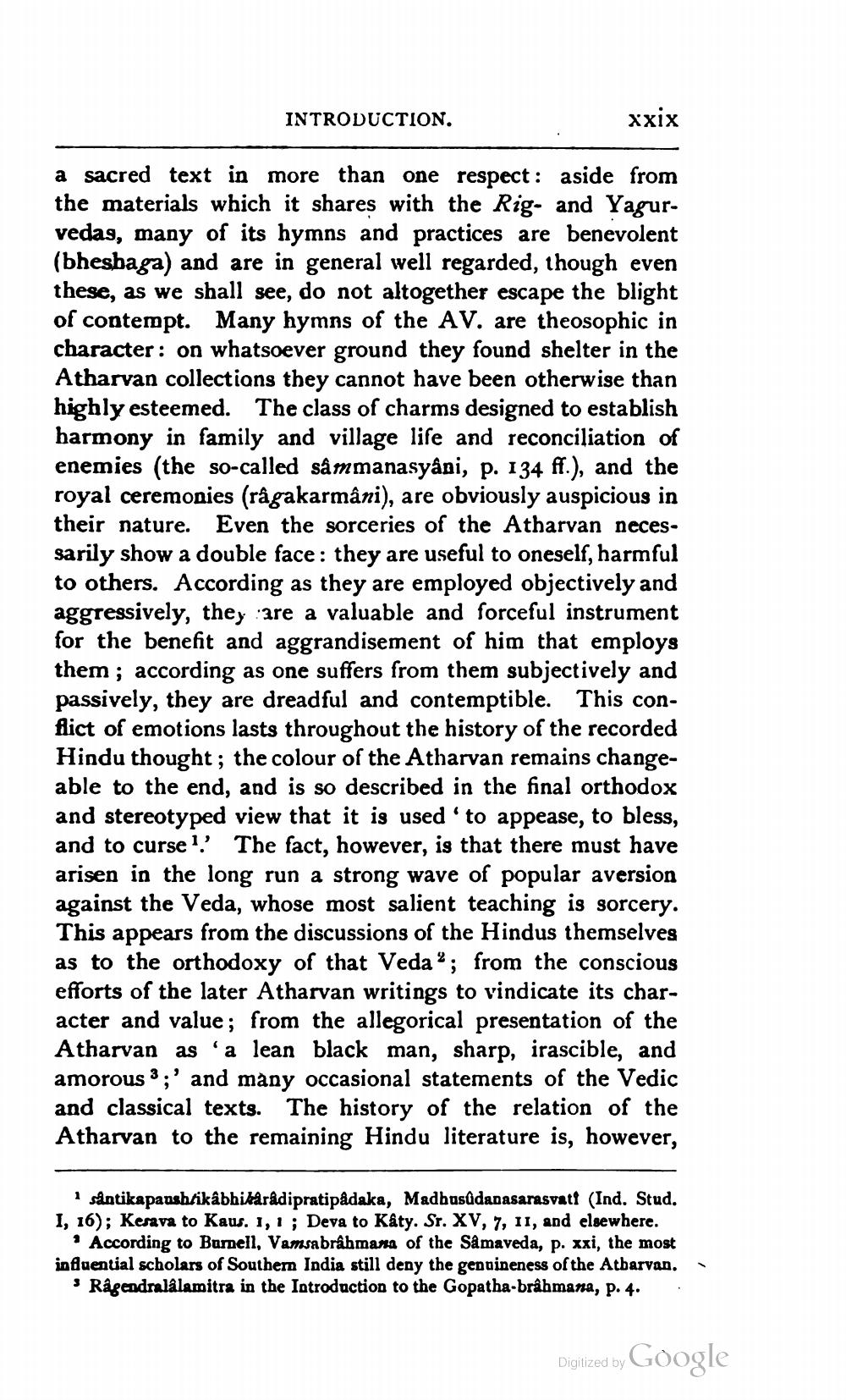________________
xxix
a sacred text in more than one respect: aside from the materials which it shares with the Rig- and Yagurvedas, many of its hymns and practices are benevolent (bheshaga) and are in general well regarded, though even these, as we shall see, do not altogether escape the blight of contempt. Many hymns of the AV. are theosophic in character: on whatsoever ground they found shelter in the Atharvan collections they cannot have been otherwise than highly esteemed. The class of charms designed to establish harmony in family and village life and reconciliation of enemies (the so-called sâmmanasyâni, p. 134 ff.), and the royal ceremonies (râgakarmâni), are obviously auspicious in their nature. Even the sorceries of the Atharvan necessarily show a double face: they are useful to oneself, harmful to others. According as they are employed objectively and aggressively, they are a valuable and forceful instrument for the benefit and aggrandisement of him that employs them; according as one suffers from them subjectively and passively, they are dreadful and contemptible. This conflict of emotions lasts throughout the history of the recorded Hindu thought; the colour of the Atharvan remains changeable to the end, and is so described in the final orthodox and stereotyped view that it is used 'to appease, to bless, and to curse1.' The fact, however, is that there must have arisen in the long run a strong wave of popular aversion against the Veda, whose most salient teaching is sorcery. This appears from the discussions of the Hindus themselves as to the orthodoxy of that Veda"; from the conscious efforts of the later Atharvan writings to vindicate its character and value; from the allegorical presentation of the Atharvan as " a lean black man, sharp, irascible, and amorous 3;' and many occasional statements of the Vedic and classical texts. The history of the relation of the Atharvan to the remaining Hindu literature is, however,
INTRODUCTION.
1 sântikapaushikâbhikârâdipratipâdaka, Madhusudanasarasvati (Ind. Stud. I, 16); Kesava to Kaus. 1, 1; Deva to Kâty. Sr. XV, 7, 11, and elsewhere. According to Burnell, Vamsabrâhmana of the Sâmaveda, p. xxi, the most influential scholars of Southern India still deny the genuineness of the Atharvan. 3 Râgendralâlamitra in the Introduction to the Gopatha-brahmana, p. 4.
Digitized by
Google




